Messe.TV presenter Jürgen Groh visits the stand of the Austrian Institute of Technology. The AIT is Austria's largest non-university research institute with more than 1,200 employees and is showcasing new developments at the InnoTrans 2016 trade fair in Berlin. What can we expect from the innovations Travel Mode Identification and Experience? Find out now in our trade fair TV - stay up to date!
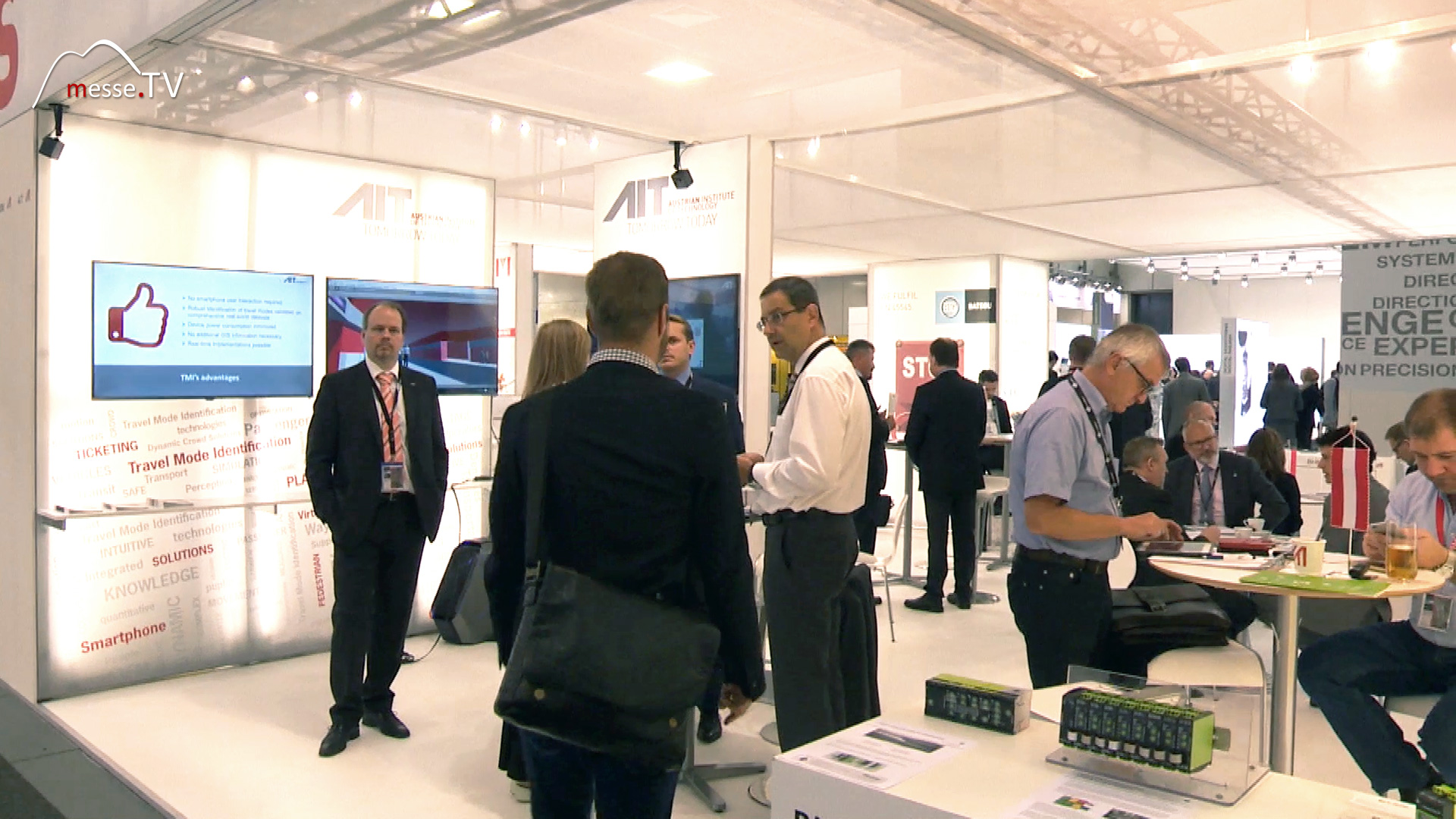
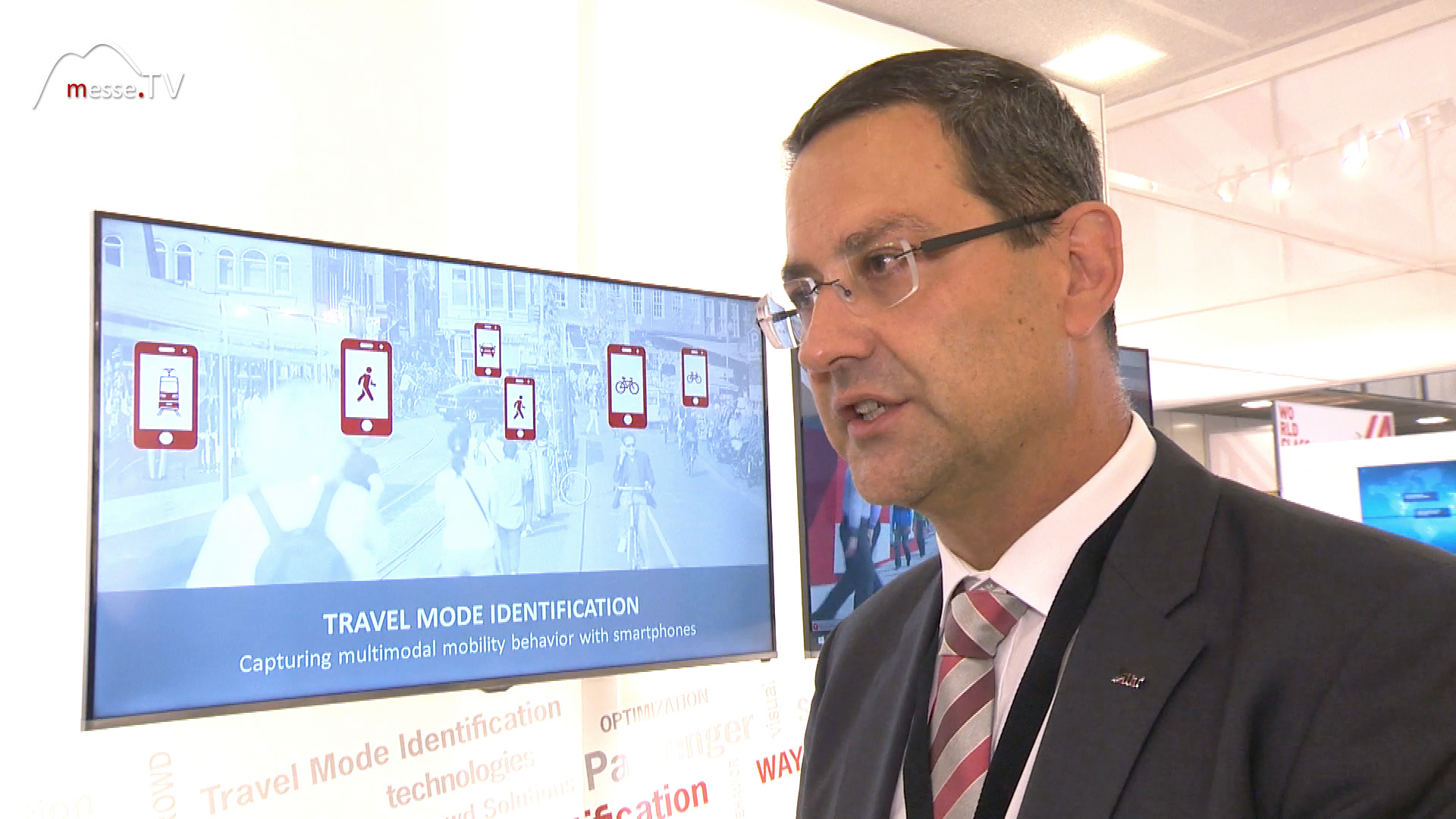
Jürgen Groh: Why is the Austrian Institute of Technology at InnoTrans? Arno Klamminger: The AIT is Austria's largest non-university research institute with more than 1,200 employees. InnoTrans is an important international trade fair and many of our potential customers are represented here. Scientific innovations also have a strong presence at InnoTrans, which is why we are here. Jürgen Groh: What innovation have you come here with? Arno Klamminger: We are represented here at the trade fair with two innovative new products. One of them is the TRAVEL MODE IDENTIFICATION. Imagine you are traveling to a city as a tourist and want to visit the city using public transport. You don't need to think in advance about whether to buy a one-day, two-day, three-day or one-way ticket. You simply get on the bus and use any means of transport. At the end of your trip, you will then receive a statement that you confirm, in which you will be charged according to the optimum fare for your stay or number of trips and then pay. This is essentially what the TRAVEL MODE IDENTIFICATION app does. Jürgen Groh: So the big, nasty bill comes at the end? Arno Klamminger: Well, it won't be a nasty bill. You have to confirm it and hopefully you will have done all these trips. Of course, you still have a control option and the opportunity to choose the optimum tariff model afterwards. Jürgen Groh: Data protectionists would certainly say: "Oh, you'll be completely transparent, all your movement data will be recorded in the city." Arno Klamminger: That's an absolutely legitimate argument, it's very valid and we have to be careful. There is a clear separation between the part that identifies the trip, classifies it and makes it traceable, because this is necessary as a basis for billing, and the billing part, which has to be done by an institution, where the personal data and also credit data are stored. The two parts are separate from each other and that is how it has to be. This is also the rule in other clearing processes.
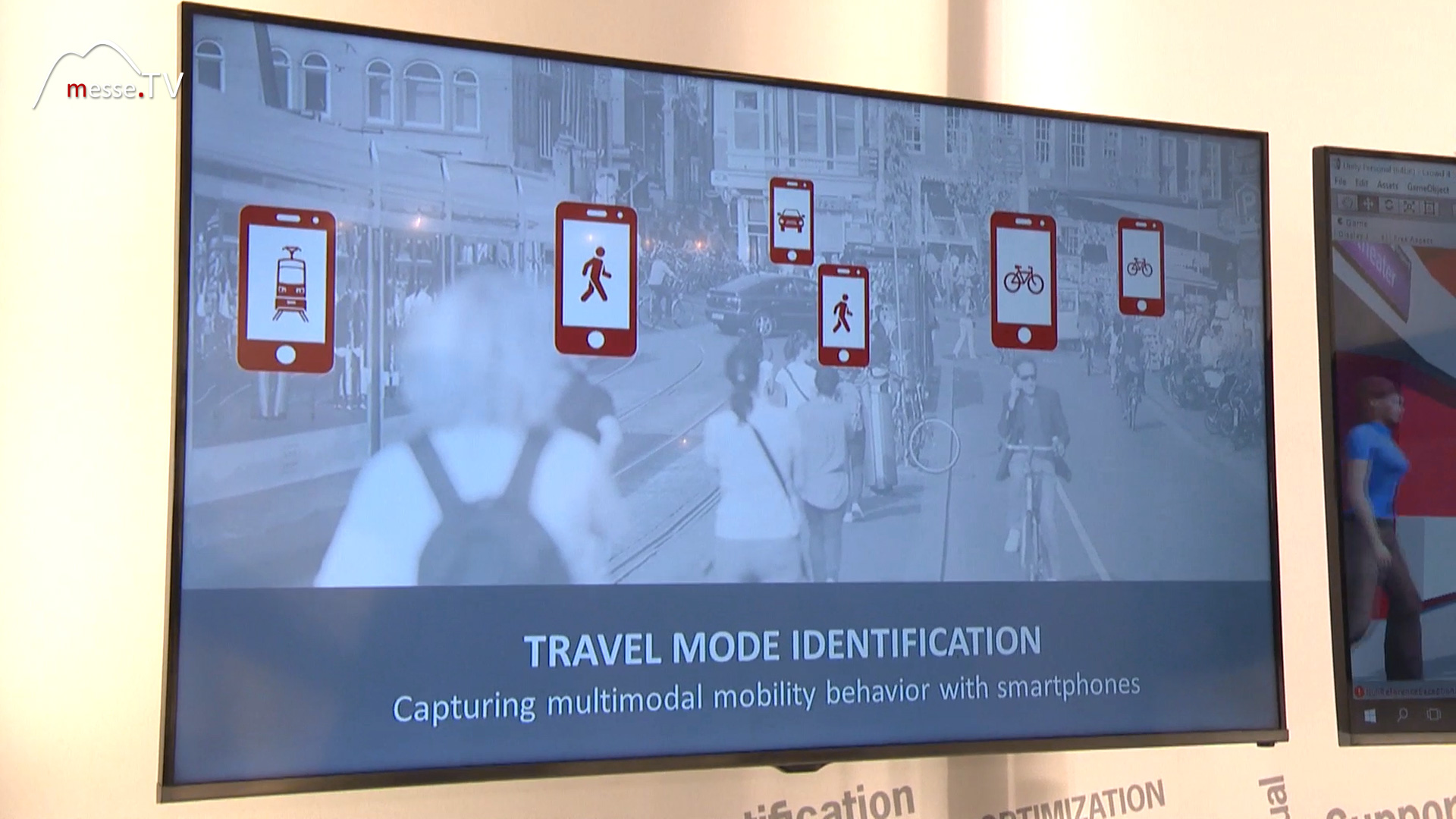
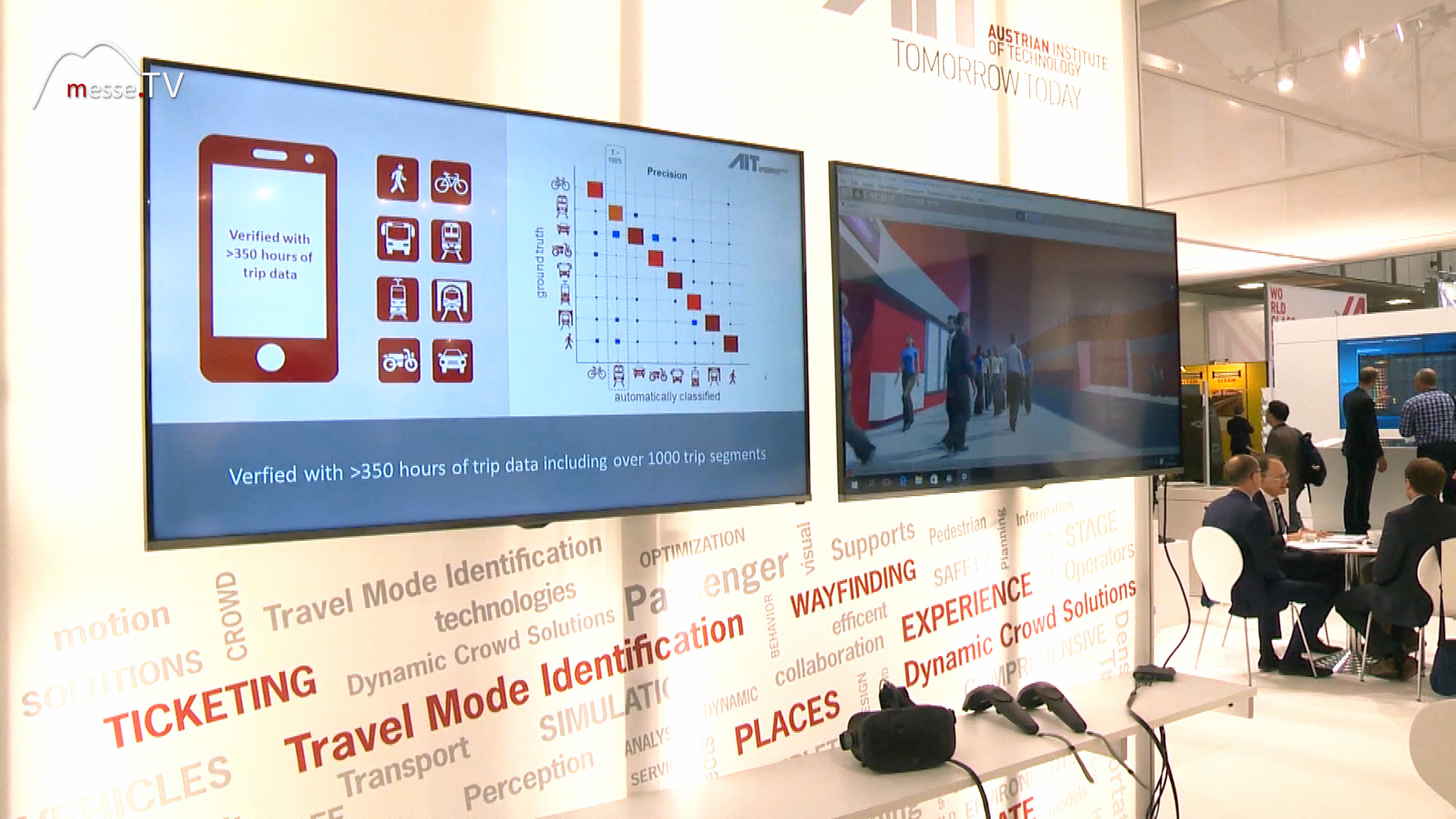
Jürgen Groh: I have read that your technology works in the background of other apps. How can I imagine this technically? Arno Klamminger: You can imagine that this software application is integrated as part of a platform. For example, you can use the platform to plan your trip, get information, but also to book your ticket and even pay for it. We integrate the part of the application that allows you to determine which means of transport you used and how long and far you traveled into the platform solution. Jürgen Groh: How does this technology work? Arno Klamminger: The technology works with a pure smartphone-based application and software that allows us to distinguish between eight different modes of transportation. From walking to subway, streetcar or train travel. This is made possible by data that we collect from the smartphone's sensors. Jürgen Groh: What does the frequency diagram here stand for? Arno Klamminger: The diagram shows a typical pattern for a means of transportation. Here you can see a bus, for example. What we see here is how the frequencies measured by the acceleration sensor on the smartphone behave. We can see how a bus behaves, i.e. a typical vibration pattern. We see a peak of two hearts, which is typical for a bus when it stops at a bus stop. This is the hum that you can also hear. Then there is another peak in the order of ten hearts, which occurs while the bus is moving. Jürgen Groh: Who is interested in the app? Arno Klamminger: Application manufacturers and transport operators who can use it to offer a dynamic pricing model are interested in the technology. Jürgen Groh: That's a great service - are there any costs for me as a user? Arno Klamminger: On the contrary, this application should actually give you the opportunity to choose the optimum fare model. It should therefore be possible to make savings. Alternatively, in the past you would have had to do a lot of research before traveling to a city. Jürgen Groh: The app itself is free? Arno Klamminger: The app itself is something that we offer to the public transport operator. The costs are then included in their business model. Jürgen Groh: You told me about a second innovation. Arno Klamminger: That's right, AIT is presenting two innovations at InnoTrans. The second is EXPERIENCE, which my colleague Mr. Seer would like to introduce to you.
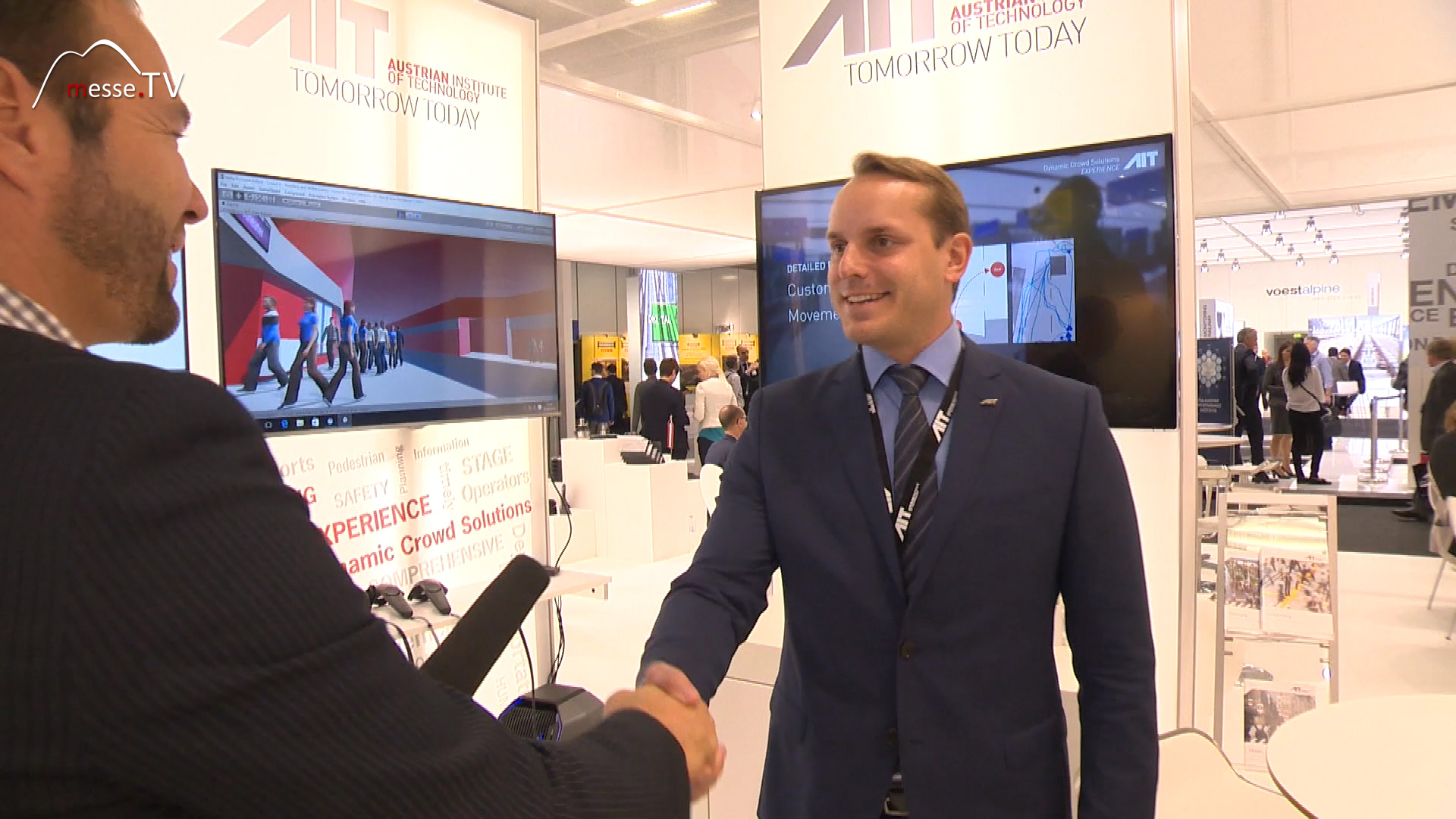
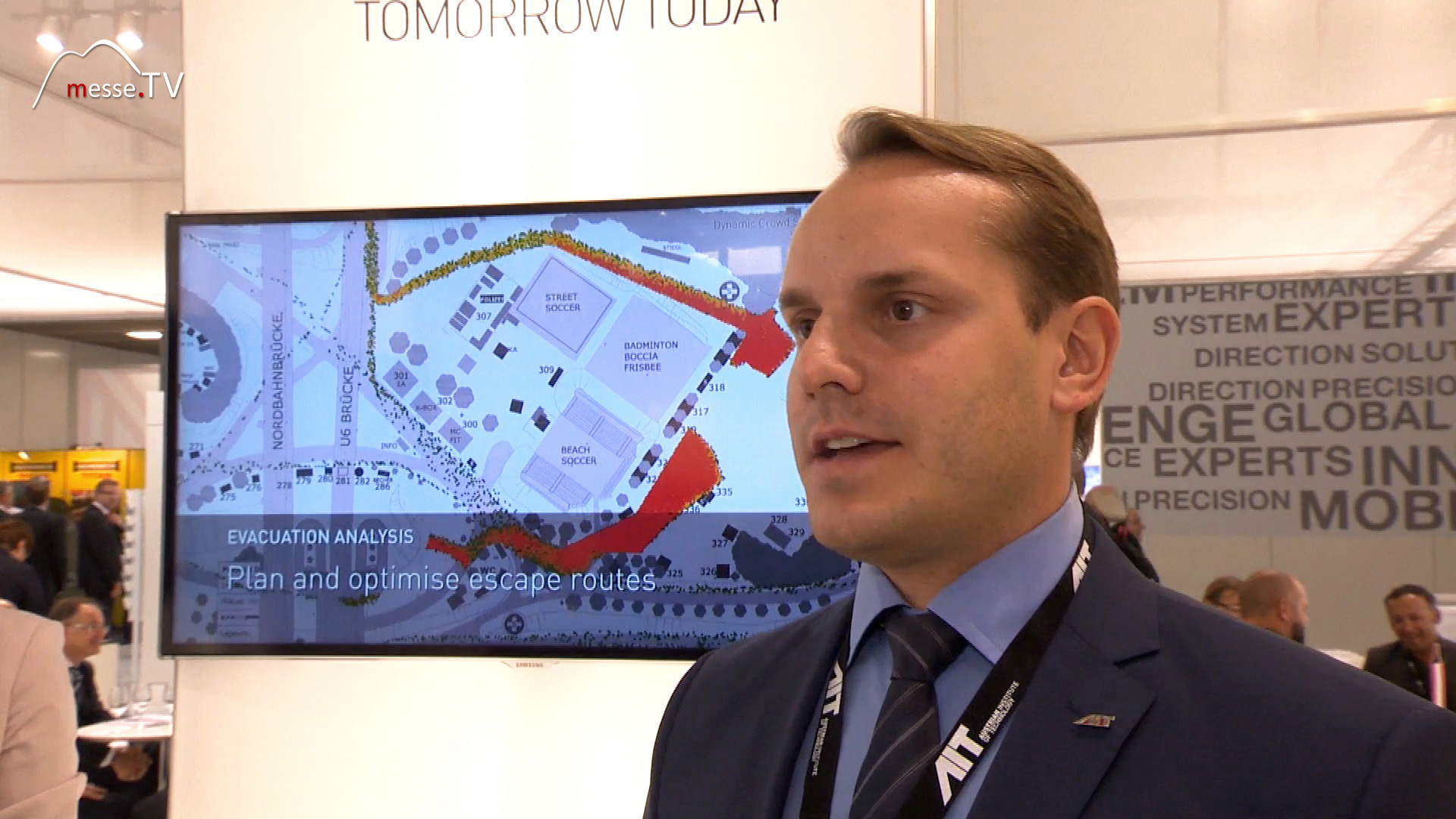
Jürgen Groh: Greetings, Mr. Seer. What is EXPERIENCE all about? Dr. Stefan Seer: Hello. Imagine you enter a train station and want to get to a ticket machine or a specific platform - but you can't find the right information to plan your route. Here you can see the system in the background. You are shown a 3D model of a subway station or a section of a subway station. This is our demonstration of the EXPERIENCE system. Jürgen Groh: How did you come up with the idea? It seems pretty futuristic. Dr. Stefan Seer: It is indeed quite futuristic, but the advantages are obvious. We want to identify at a very early stage the deficits that can occur in a design or in control systems. We can do that with this system. It can optimize the flow of people and improve overall user satisfaction. Jürgen Groh: Who is your target group at EXPERIENCE? Dr. Stefan Seer: Our target group is of course the architects who plan infrastructures, but of course also transport planners and operators of transport infrastructures. We are addressing all infrastructures where a lot of people are on the move. Train stations, airports or even shopping centers. Jürgen Groh: And how does EXPERIENCE work? Dr. Stefan Seer: We can demonstrate that for you. My colleague will show you with VR glasses. Jürgen Groh: She can now see the model that we see on the screen on the virtual reality glasses? Dr. Stefan Seer: Exactly. The colleague is now wearing these glasses, the so-called head-mounted display, with which she is directly in this 3D environment. We can also see what our colleague sees on the screen. She can now move around in this infrastructure.
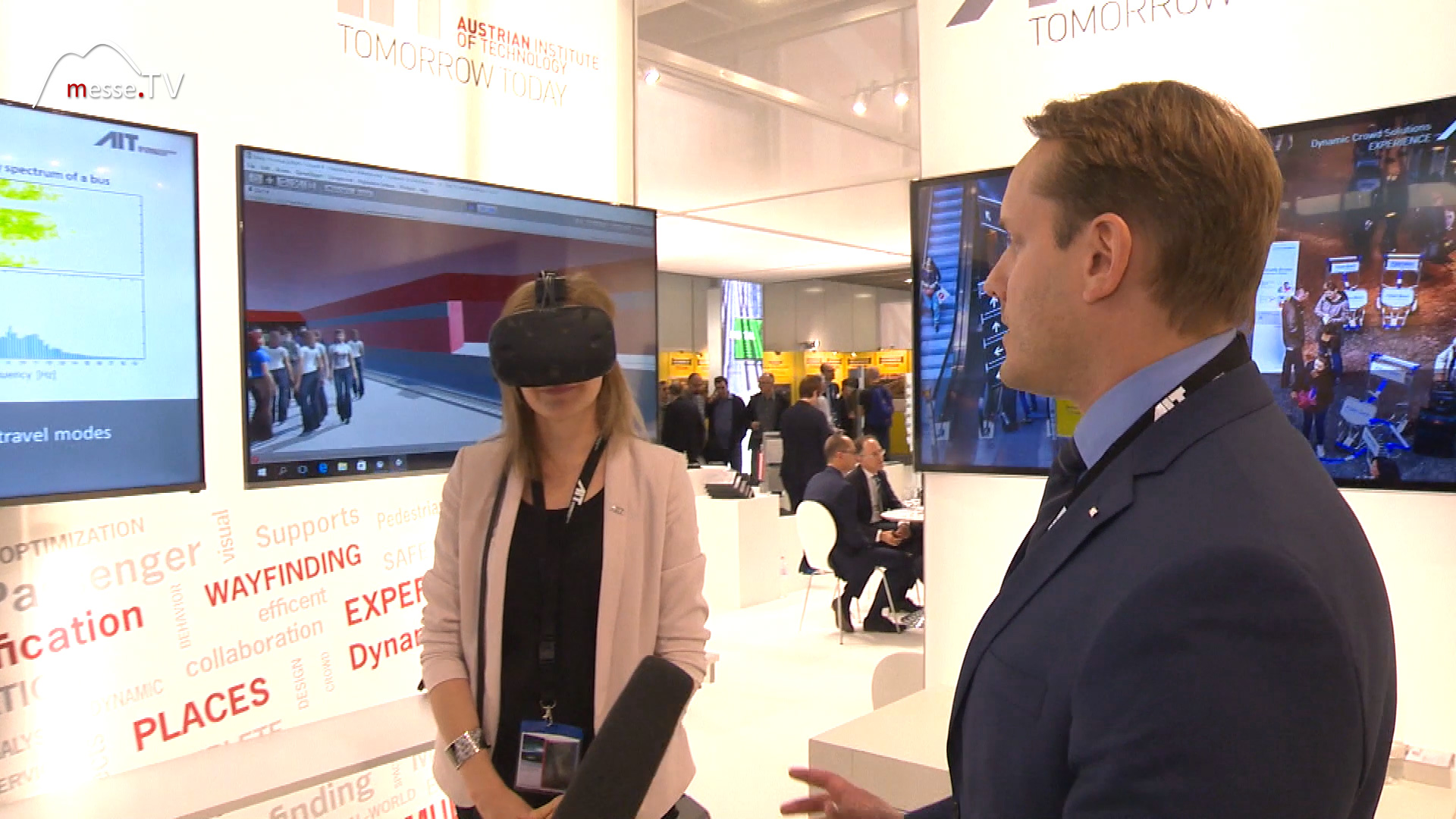
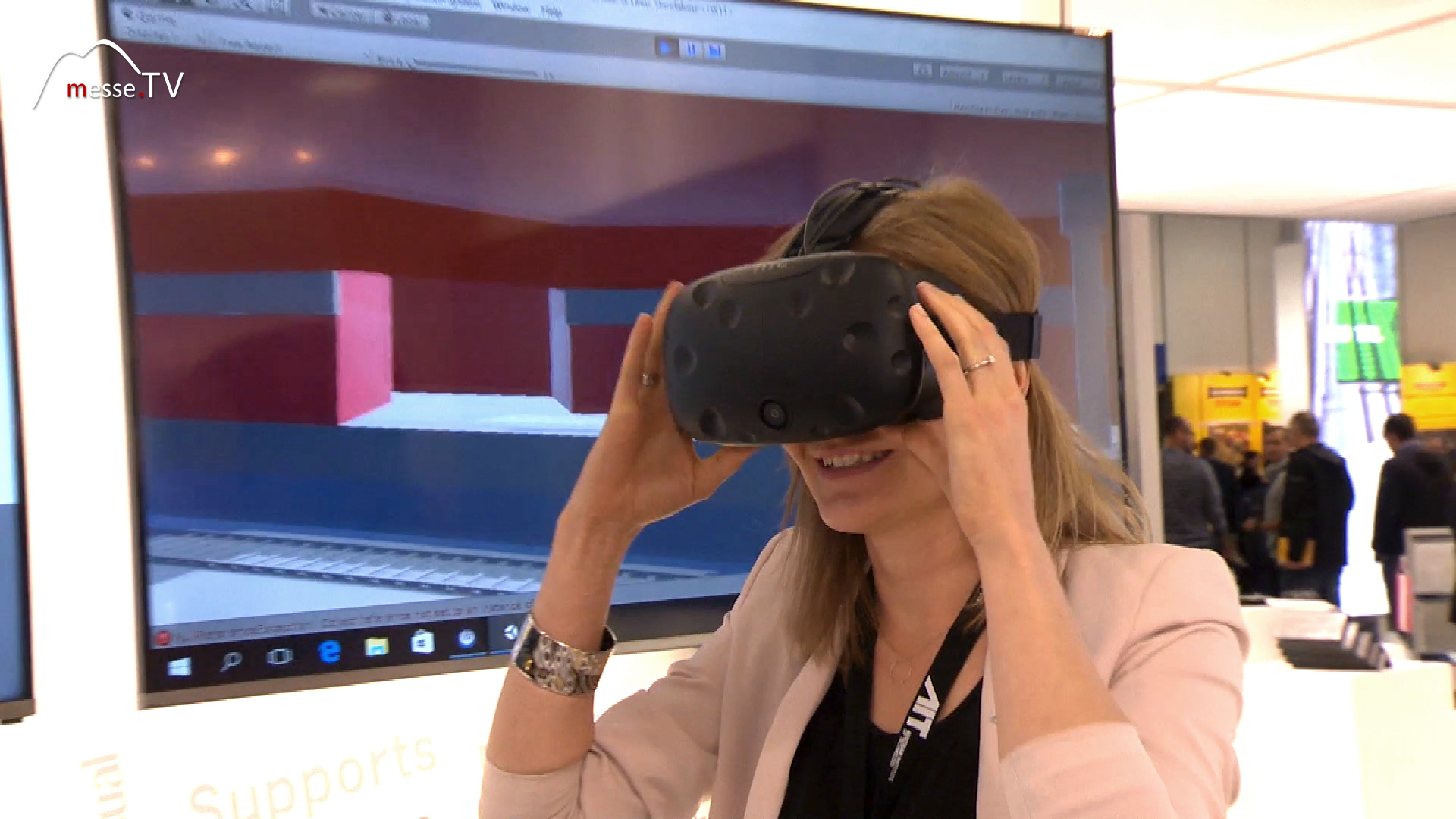
Jürgen Groh: But you can't see us now, can you? Dr. Stefan Seer: No, she can't see us now. She can directly see this scene on the platform and can experience what is happening there. Where the information is displayed. Then we see here, for example, a subway platform. This is a demonstration to show how realistic this entire environment is. Jürgen Groh: Are you a pioneer in this market or do you have a lot of competition? Dr. Stefan Seer: As we come from the field of research and development, what you see here is a completely new product, a completely new service. So it's the first time that you can get something like this on the market. Jürgen Groh: How far along are you in the planning stage with the system - is it already being used? Dr. Stefan Seer: The basic technology and methodology that we are using here has already been tested in development on a real planning project. This happened at Vienna Central Station. We were able to test the method there. Jürgen Groh: Absolutely future technology. Where will the journey take us in the next 20 years? What else is possible? Dr. Stefan Seer: A lot is still possible at the moment. We see a lot of potential. It is conceivable to use the system not only for planners and experts, but also to inform the general public about what planning projects are and to obtain feedback. We come from the field of research and the technology offers us a good basis for investigations. Which aspects in the room have a good effect on the flow of people and which points are a hindrance. We now have a controlled test environment that allows us to collect a lot of valuable data. Jürgen Groh: I wish you all the best - see you in two years' time. Dr. Stefan Seer: Thank you very much!